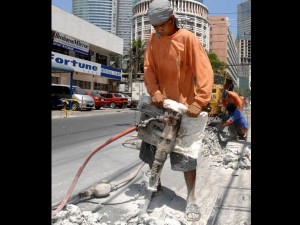
The government again failed to spend as much as it should on public goods and services during the first quarter even as collections of taxes and other revenues jumped by double-digit rates, bringing the budget deficit to a narrower P33.5 billion in end-March. INQUIRER FILE PHOTO
The government again failed to spend as much as it should on public goods and services during the first quarter even as collections of taxes and other revenues jumped by double-digit rates, bringing the budget deficit to a narrower P33.5 billion in end-March.
The first-quarter cash operations report released by the Department of Finance yesterday showed that the national government’s expenditures from January to March reached P504 billion, up 4 percent year-on-year but 13-percent lower than the P582.2-billion target.
This means the government did not roll out a number of infrastructure and other projects that were vital to support economic growth. Last year, government underspending was largely blamed for the dismal 6.1-percent gross domestic product (GDP) growth.
Economic managers attributed last year’s anemic spending mainly to the “chilling effects” of a Supreme Court decision declaring as unconstitutional the controversial Disbursement Acceleration Program (DAP) earlier introduced by the Aquino administration to fast-track expenditures funded by government savings. Budget Secretary Florencio B. Abad had pledged to reverse such trend, claiming that the Department of Budget and Management has been improving spending processes in order to facilitate faster disbursements.
The slower expenditures brought the first-quarter budget deficit below both the program of P98.1 billion as well as the P84.1-billion shortfall posted in the first three months of last year.
Government revenues during the first quarter grew by a robust 18 percent to P470.5 billion even as collections were below the P484.1-billion goal.
The Bureau of Internal Revenue’s first quarter tax-take rose 16 percent year-on-year to P307.1 billion, although this was 9-percent lower than the target.
The Bureau of Customs, meanwhile, saw its end-March collections of import duties and other taxes increase by 7 percent year-on-year to P92.3 billion, but still below program by 11 percent.


